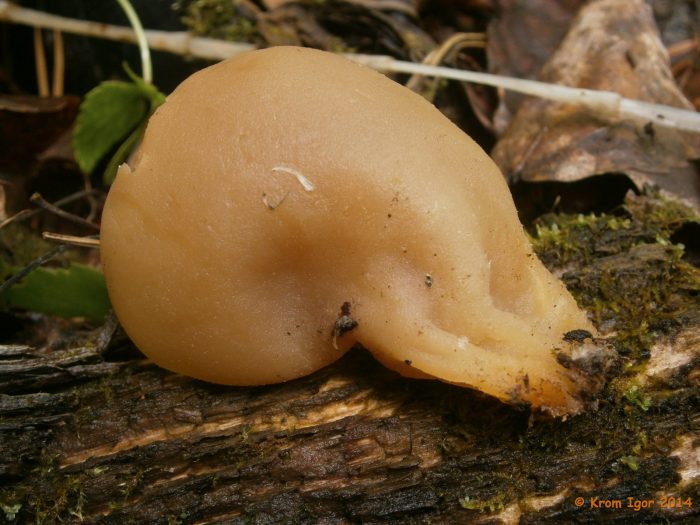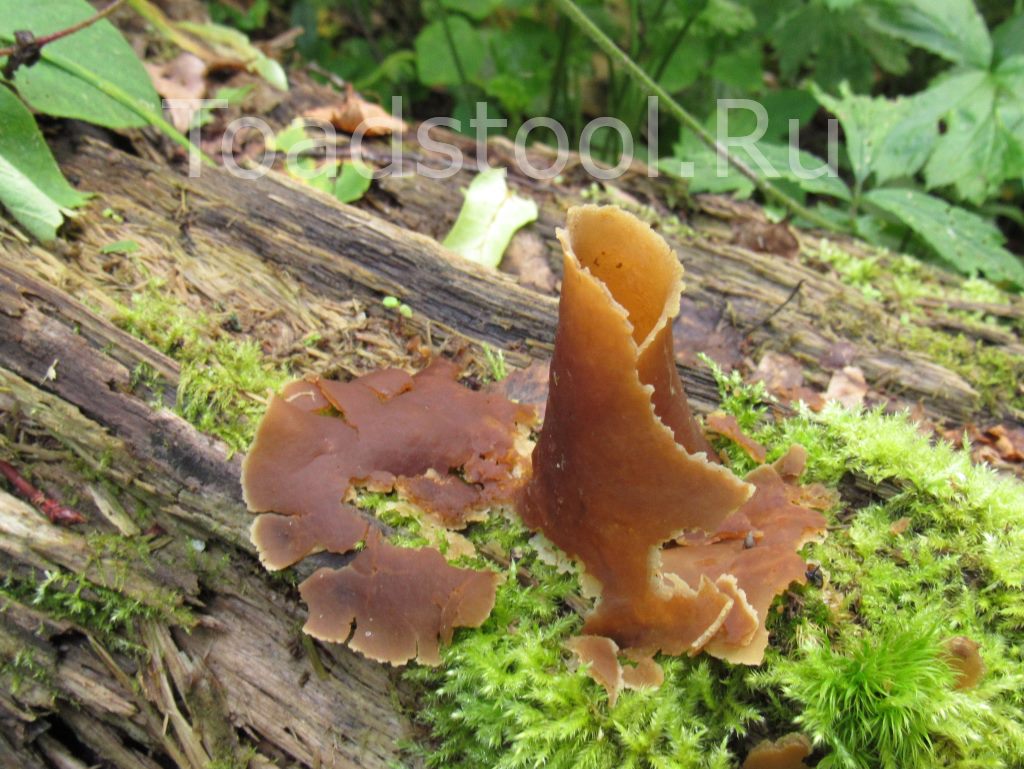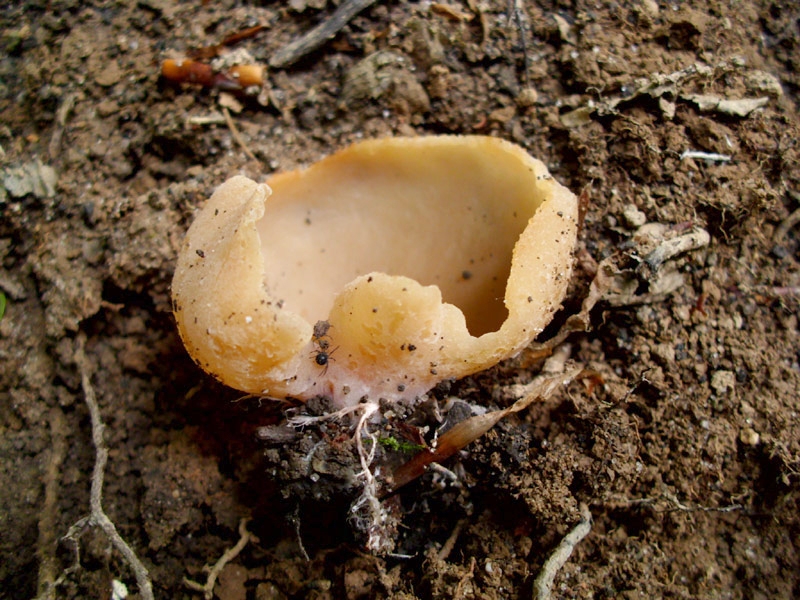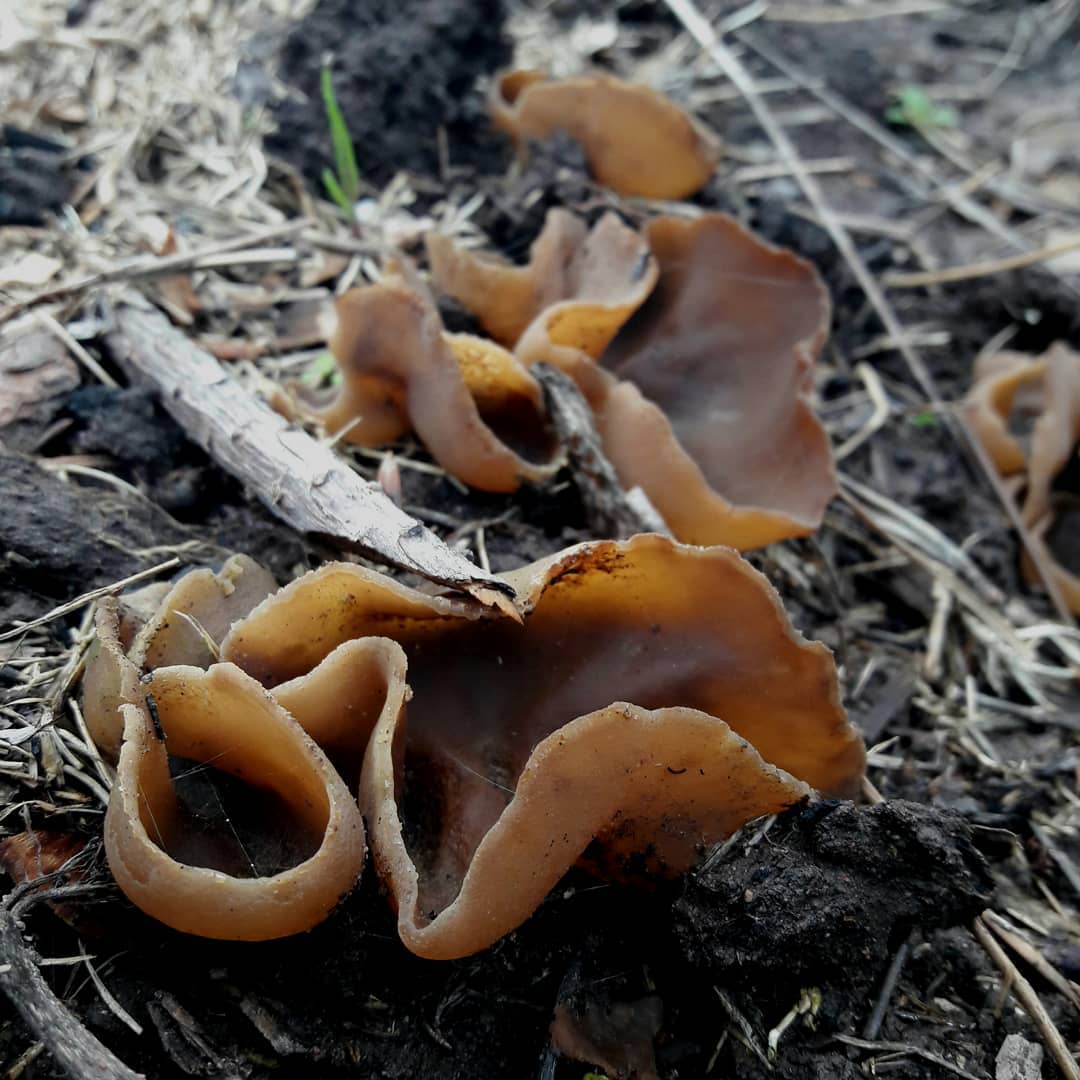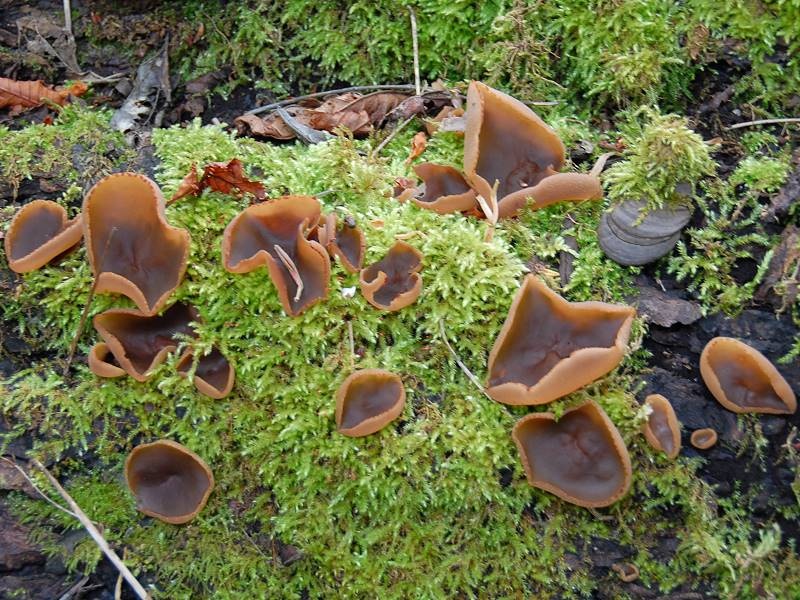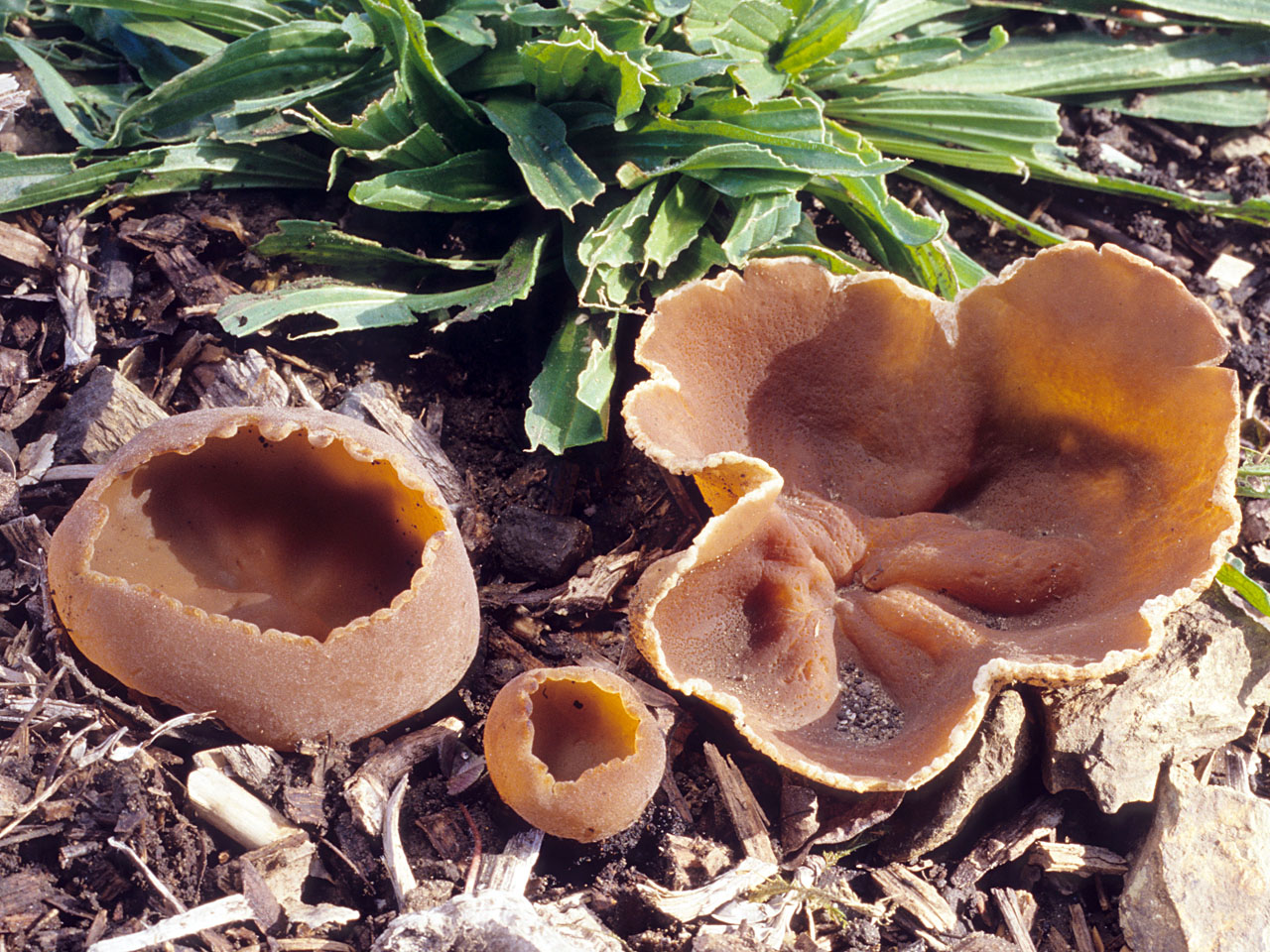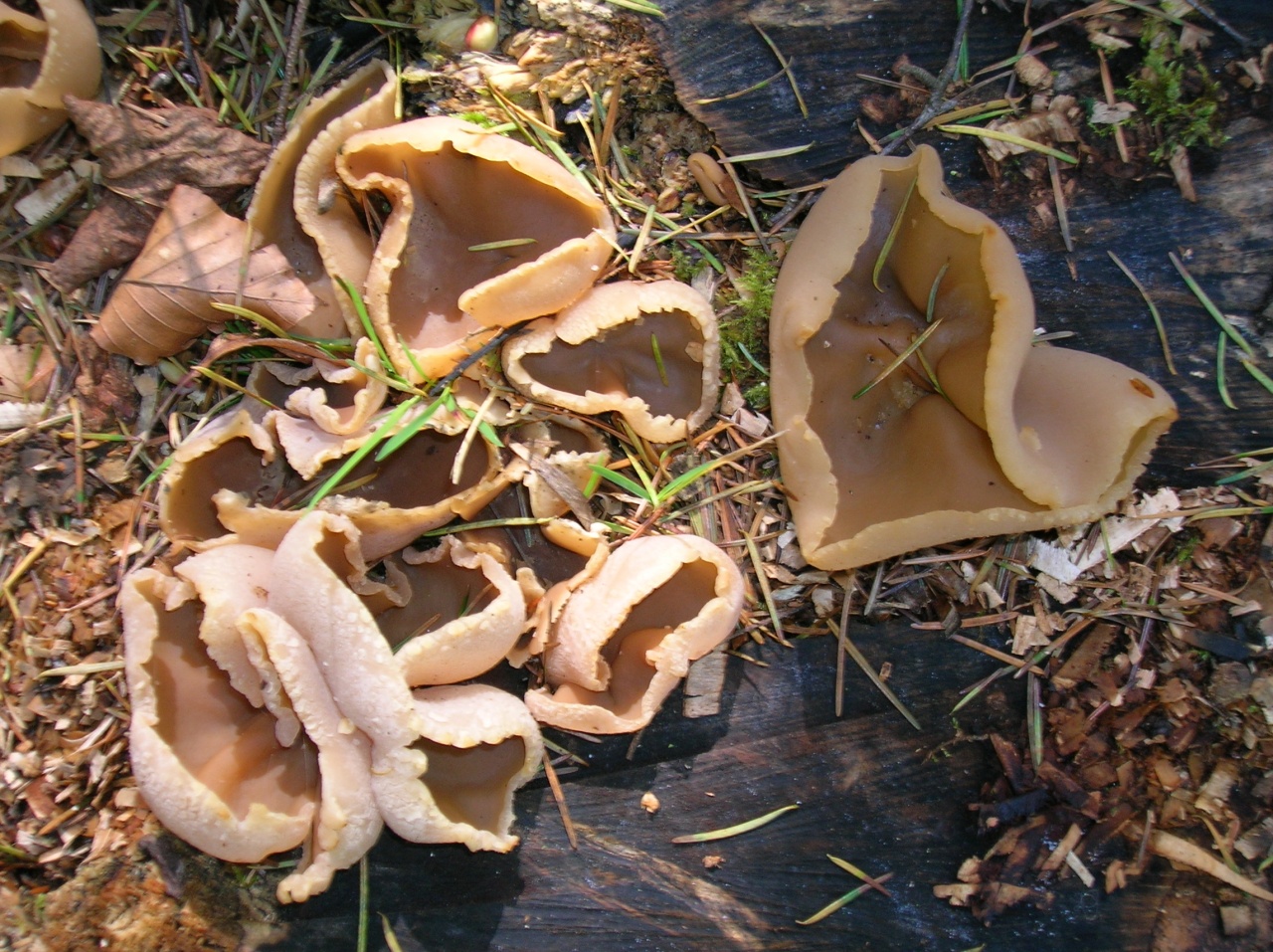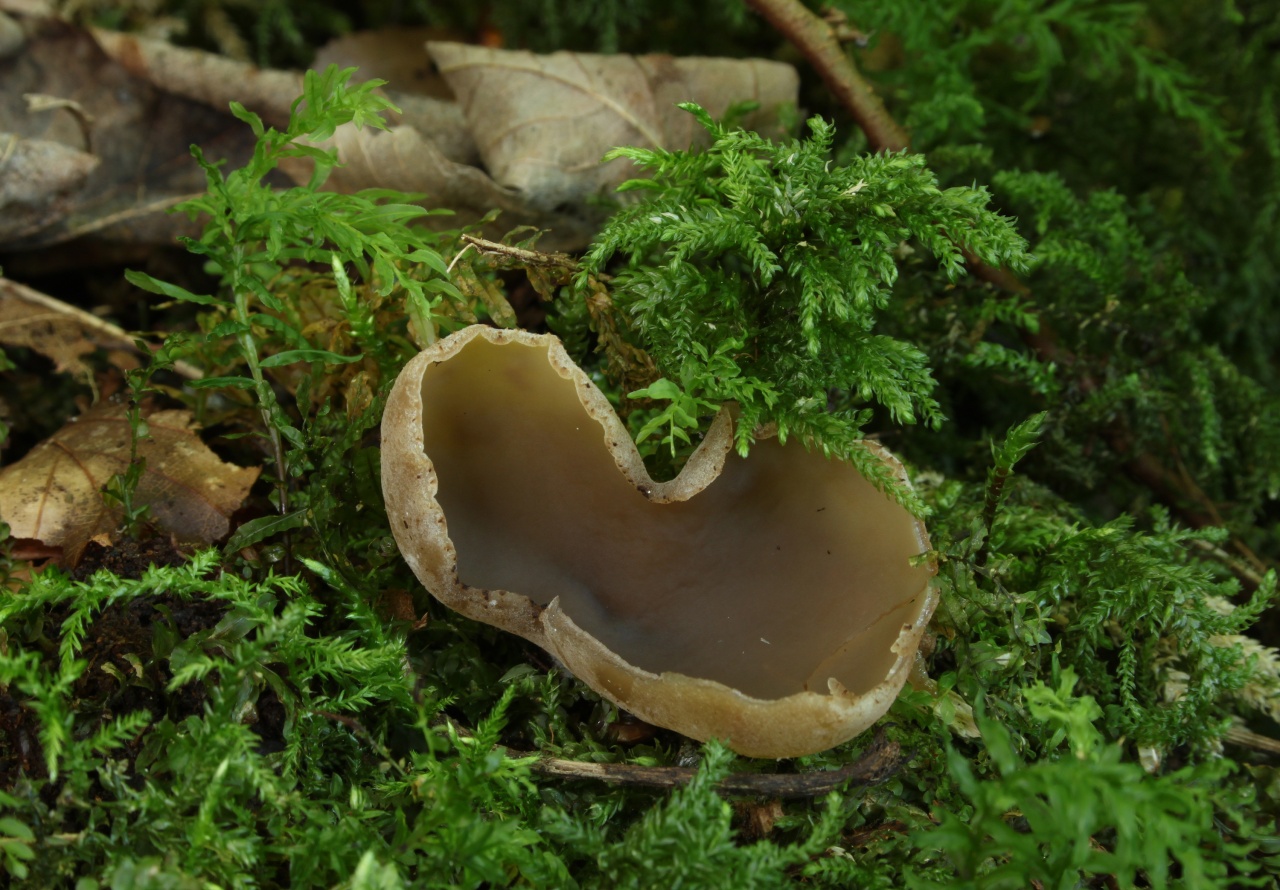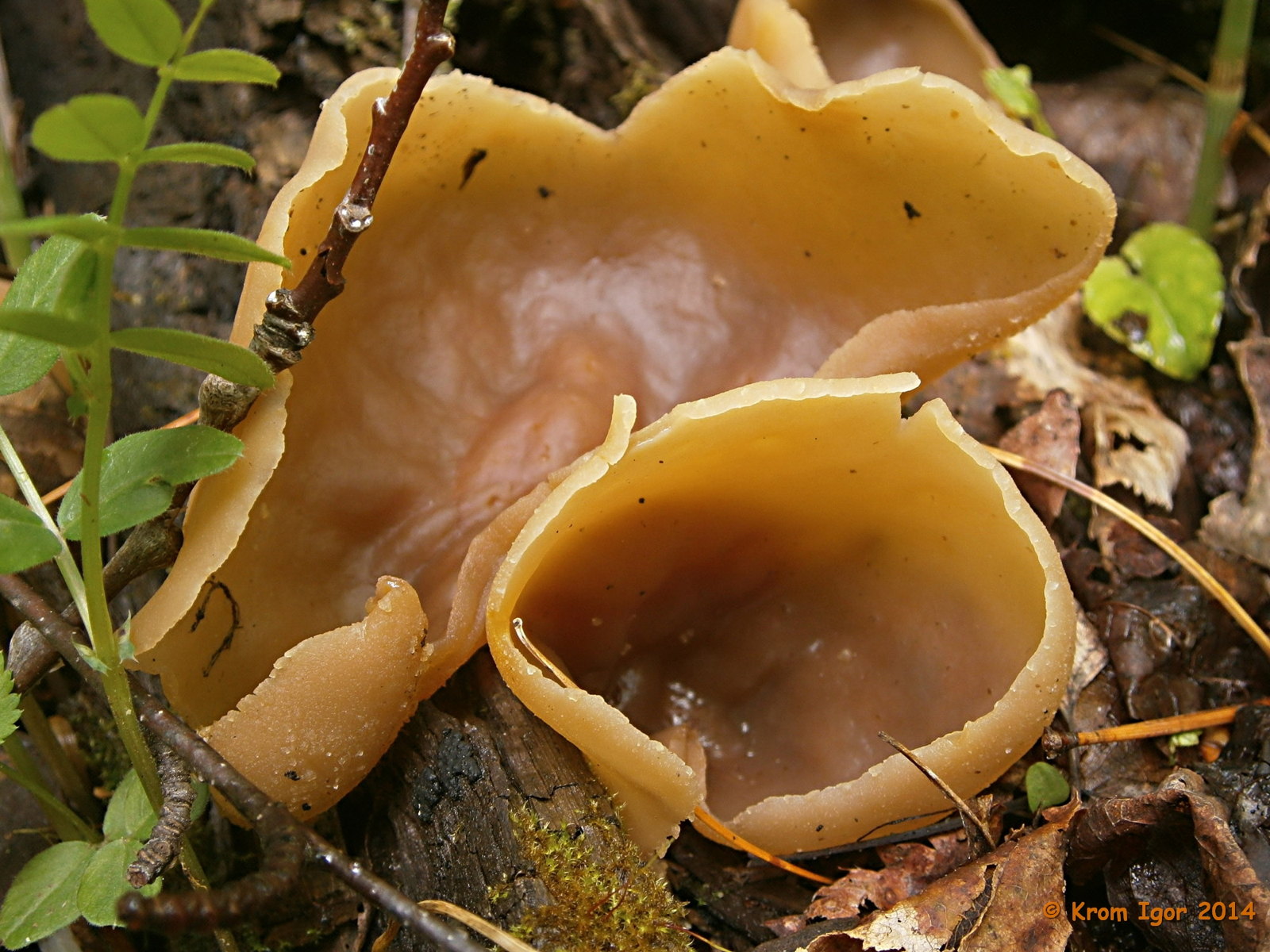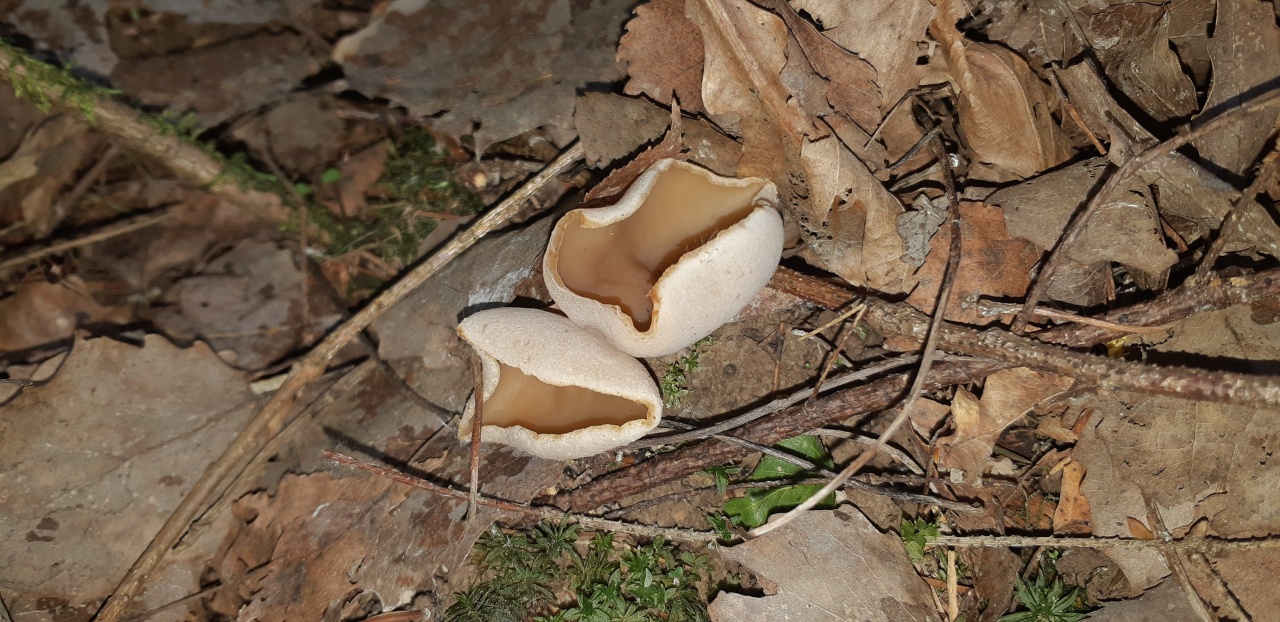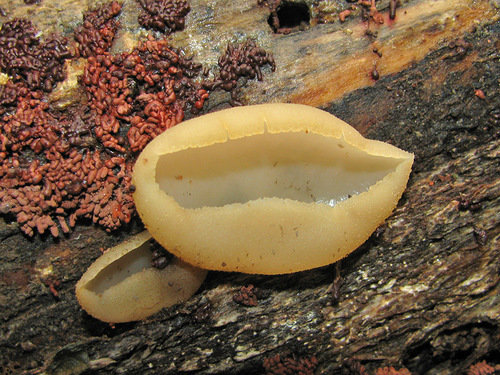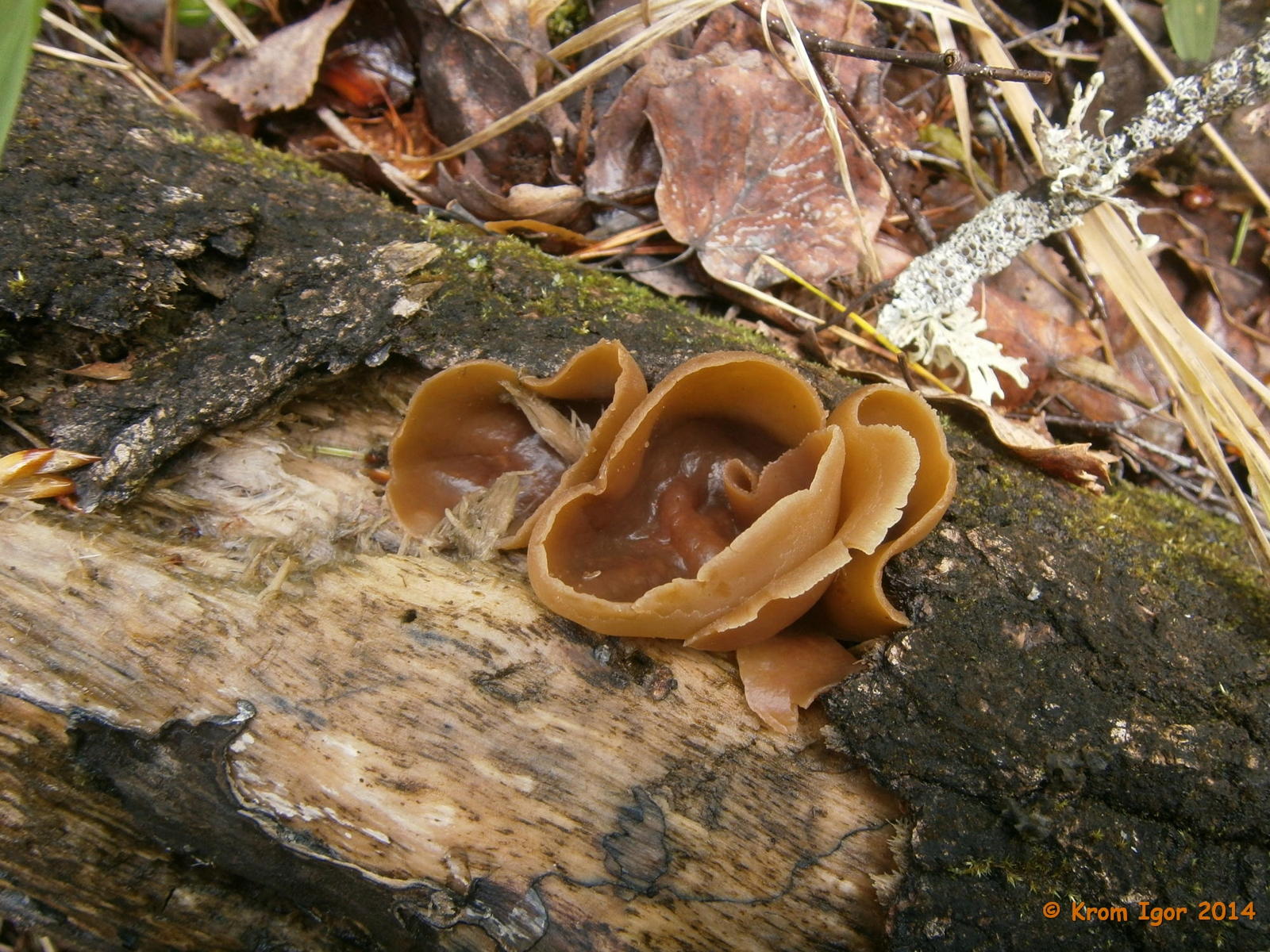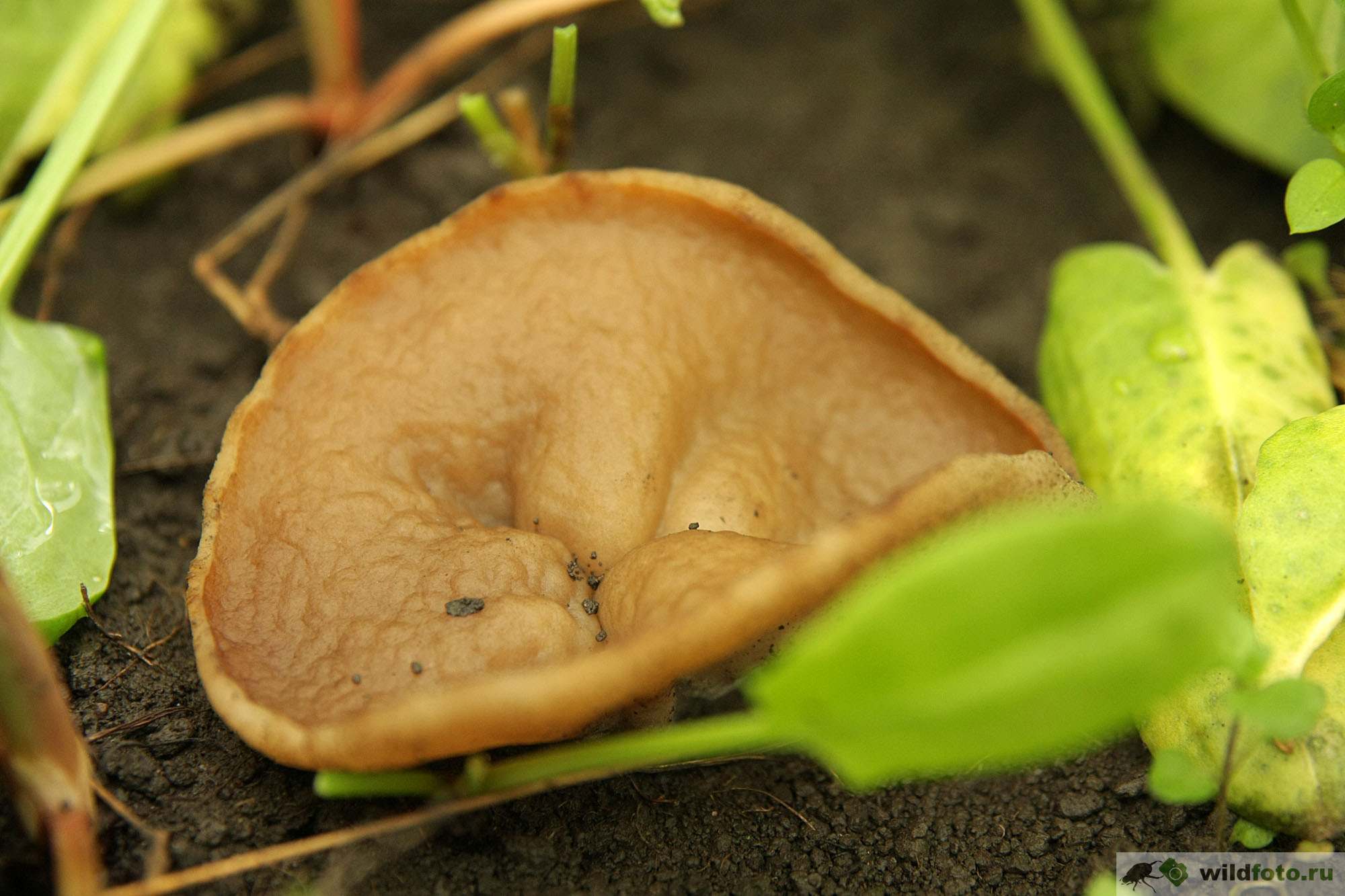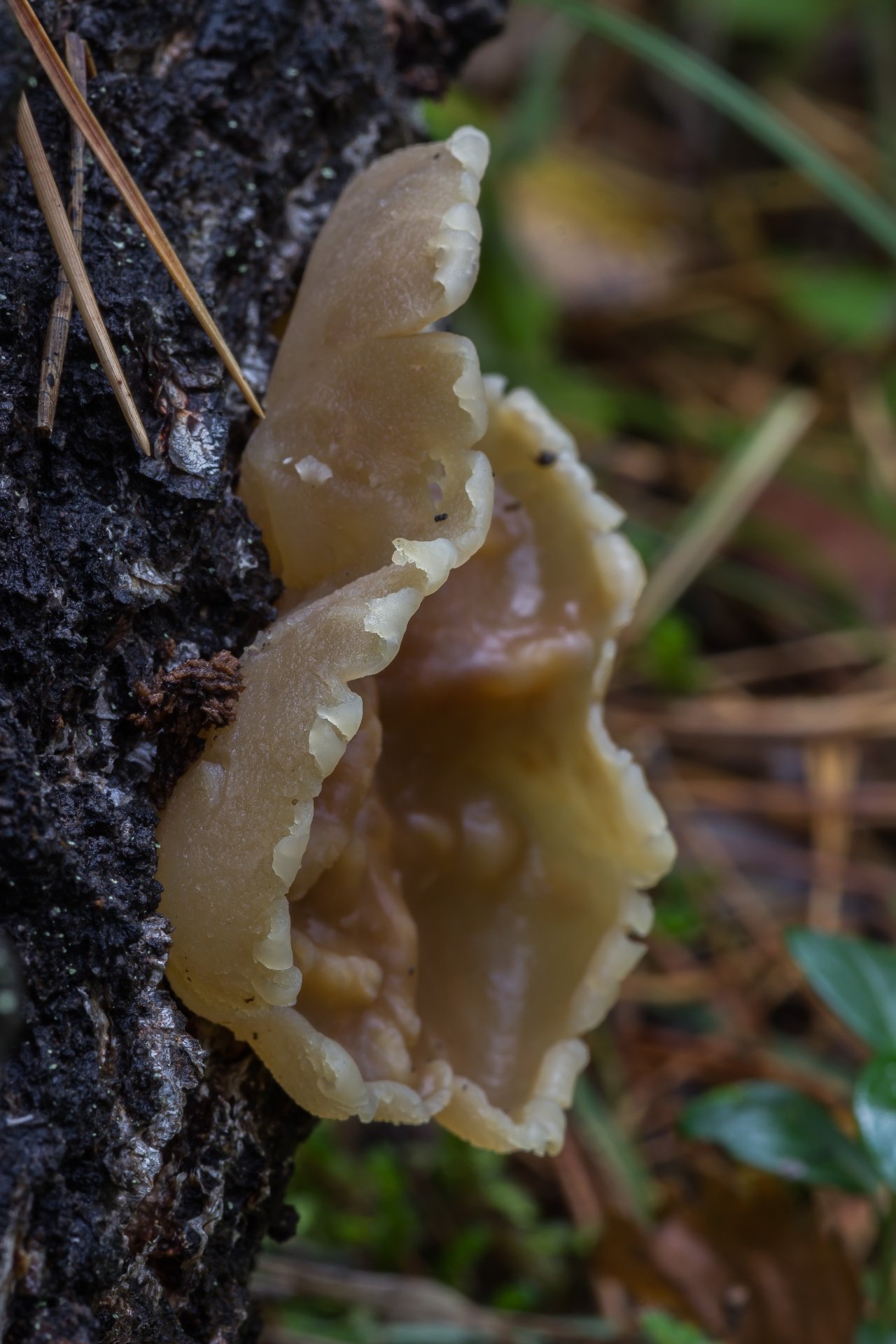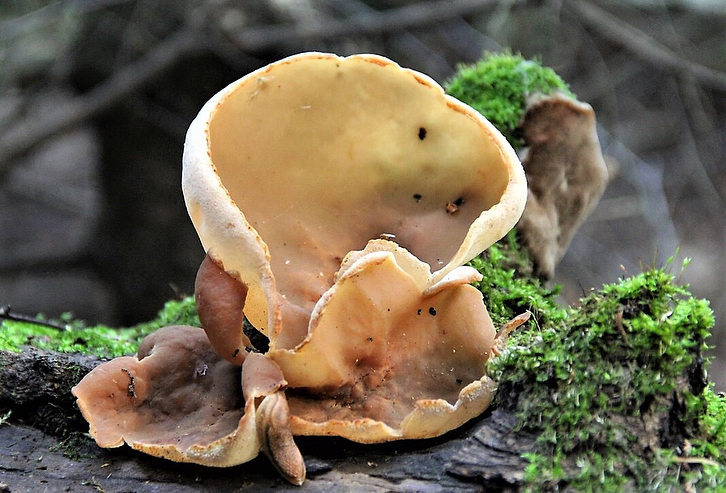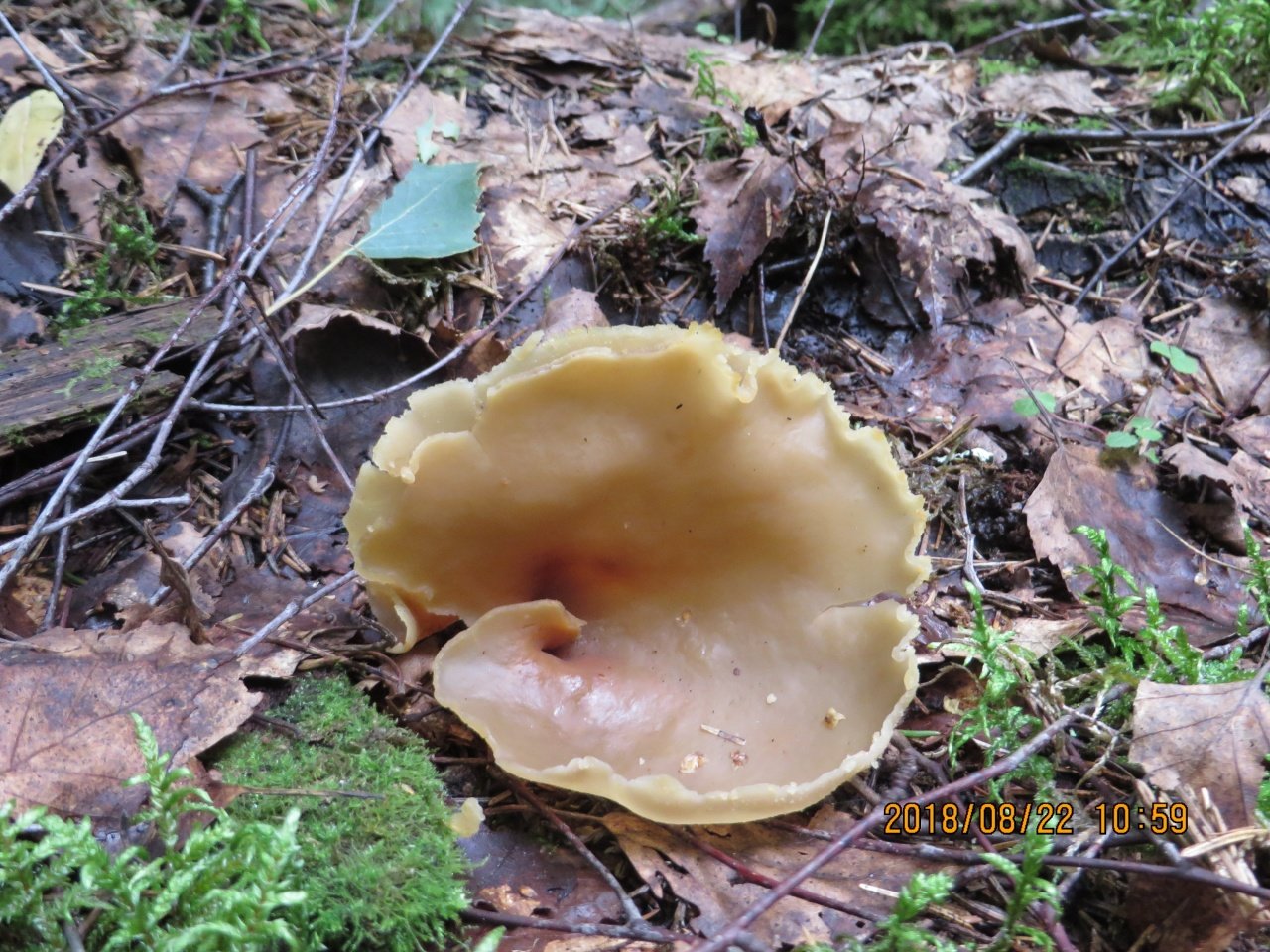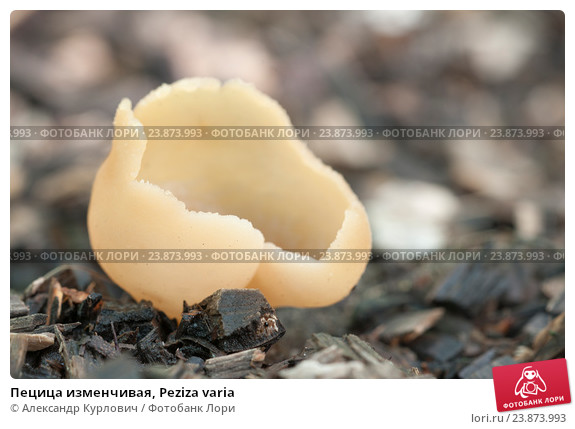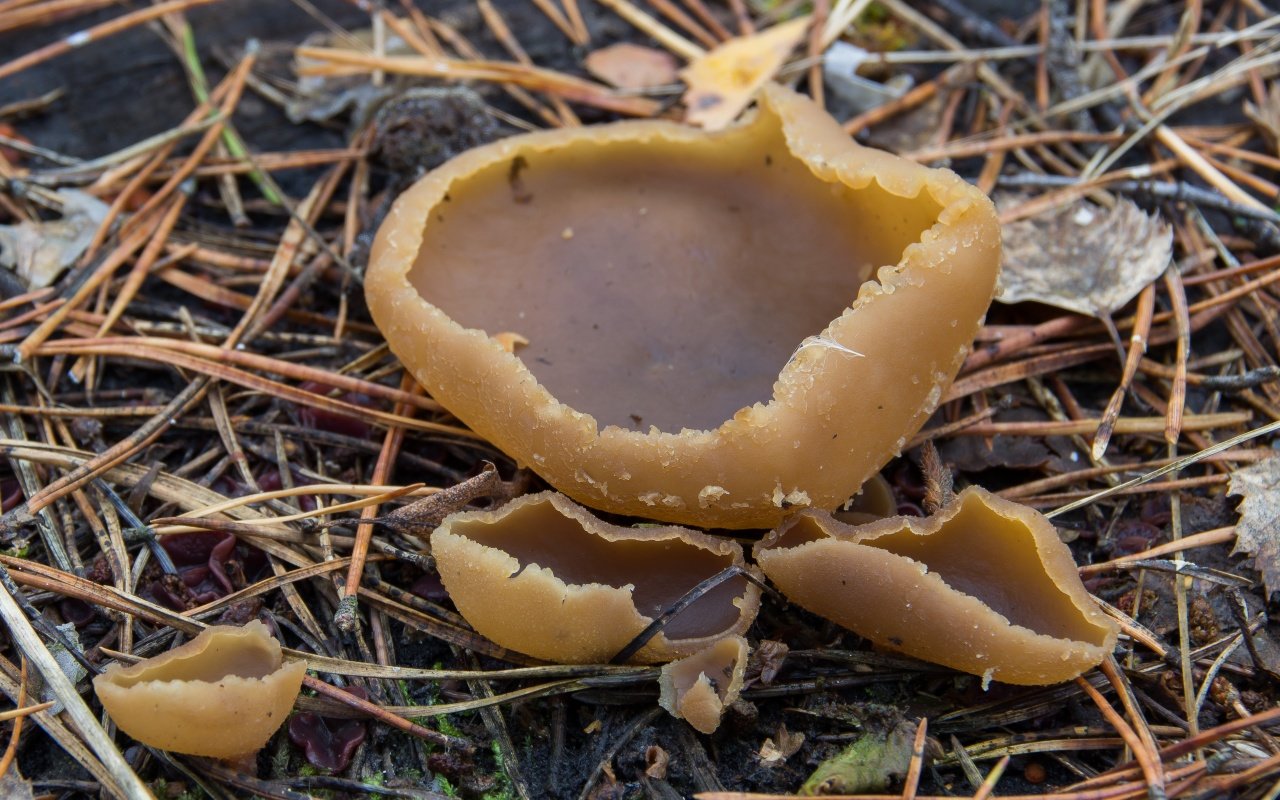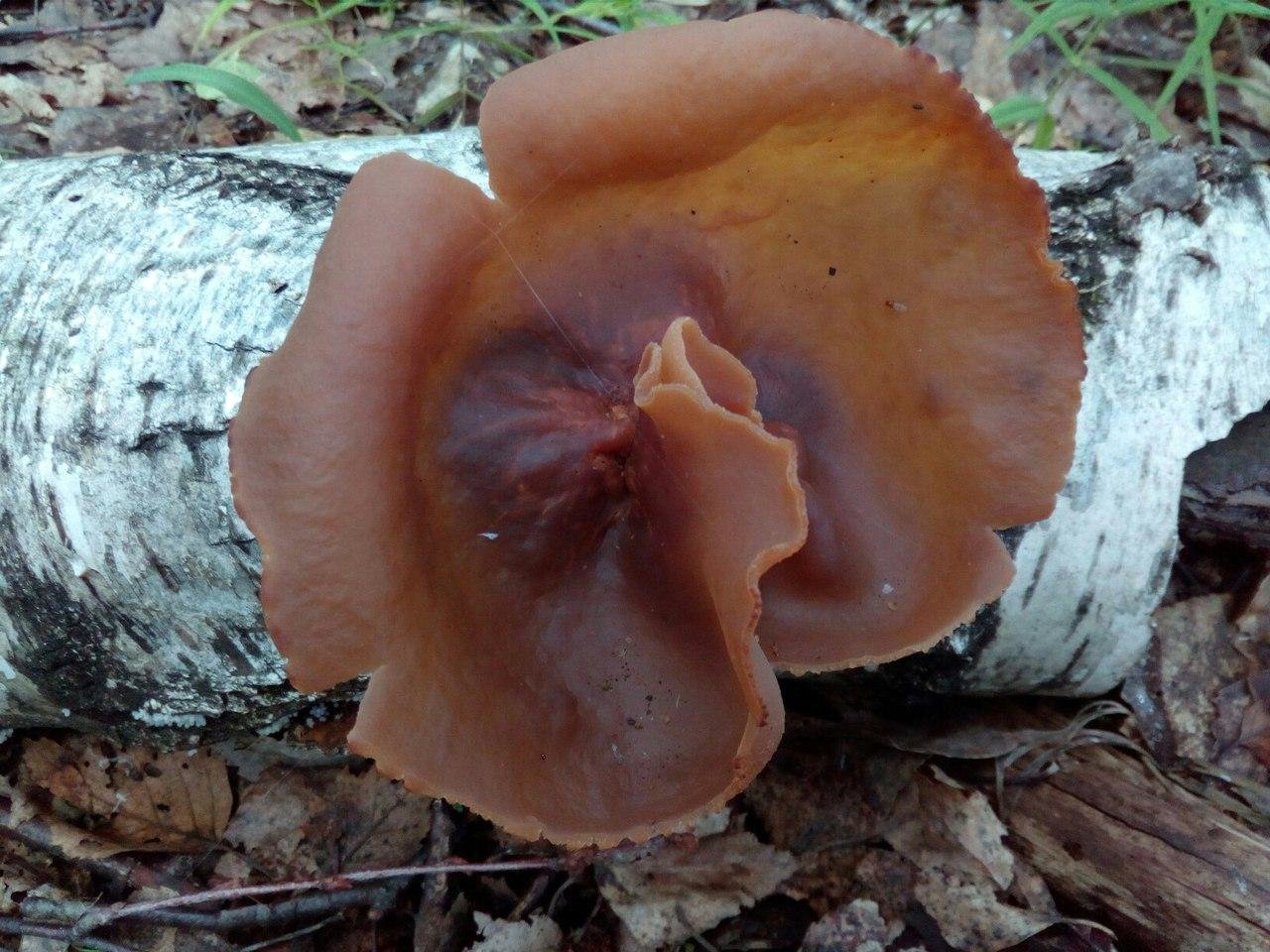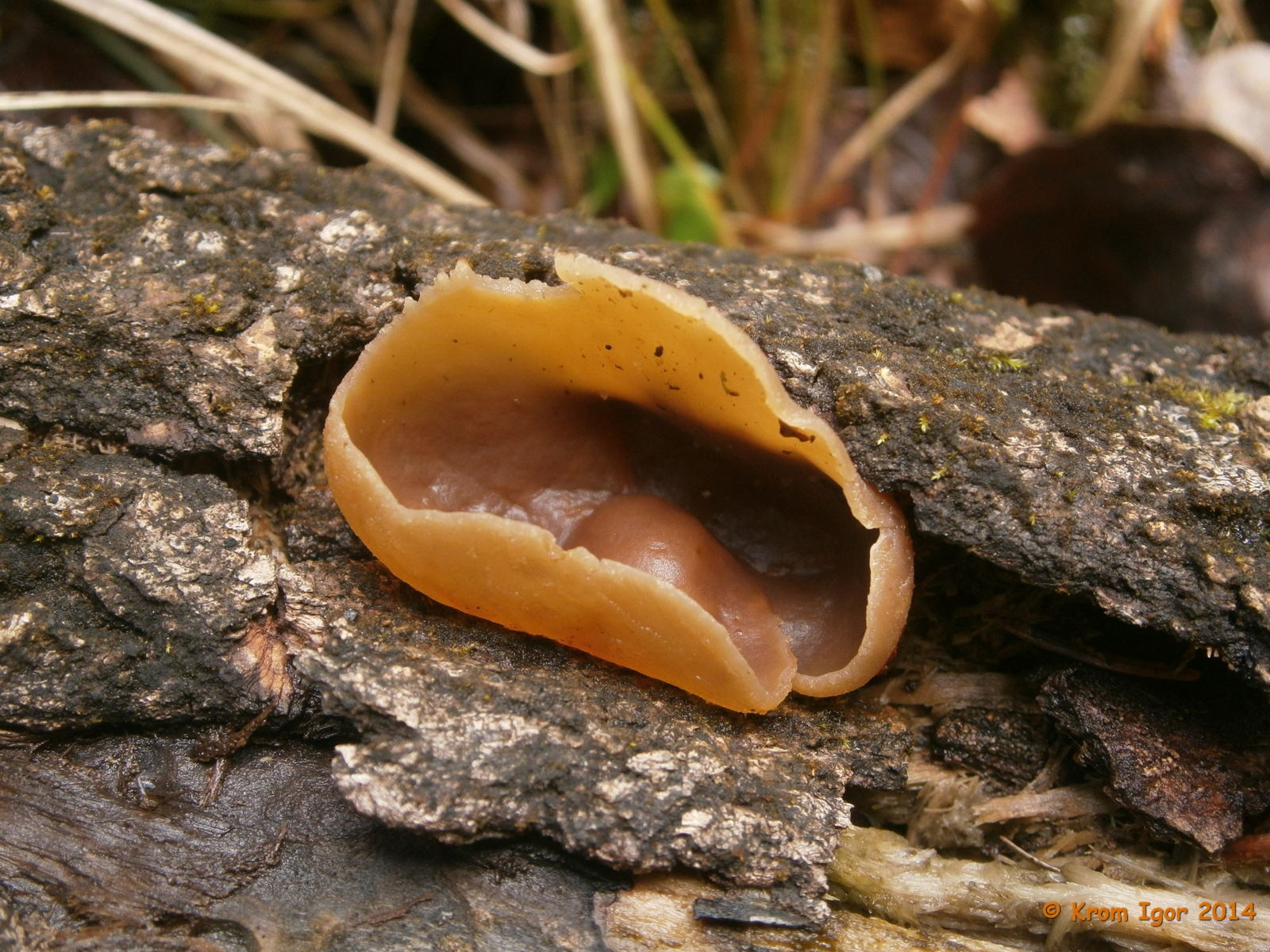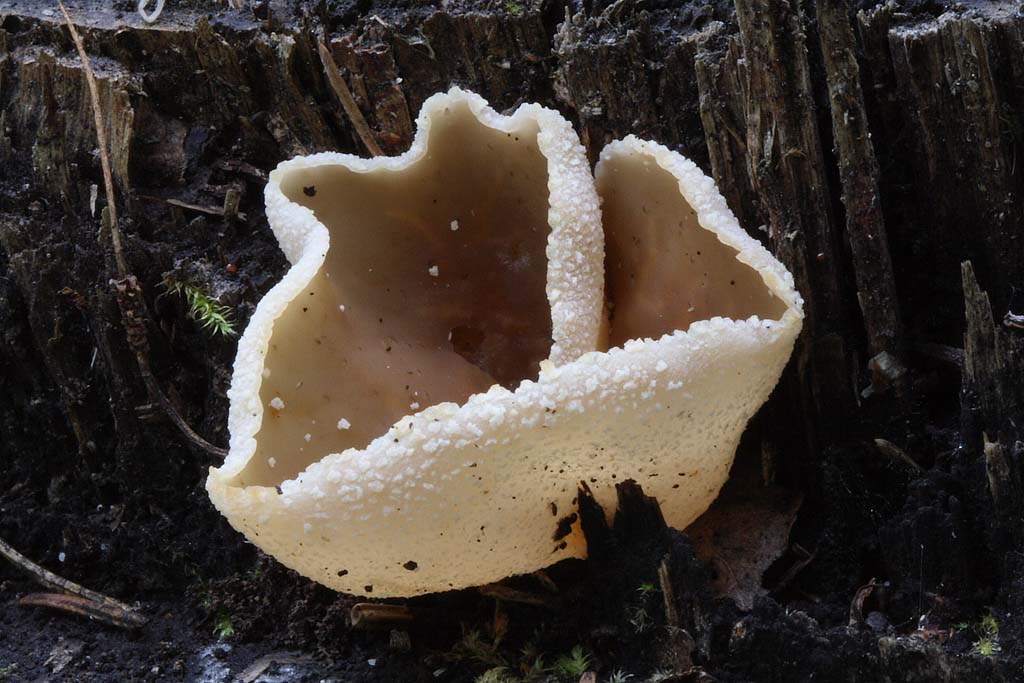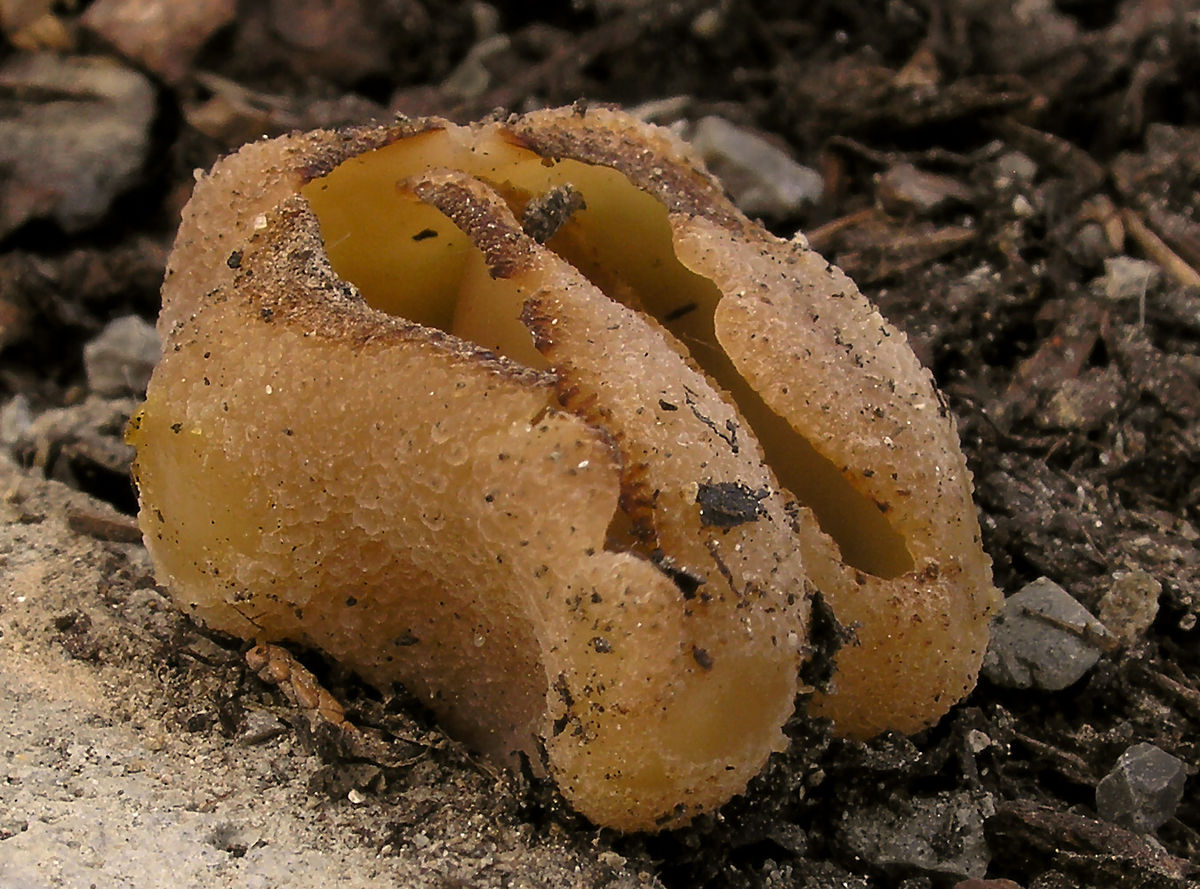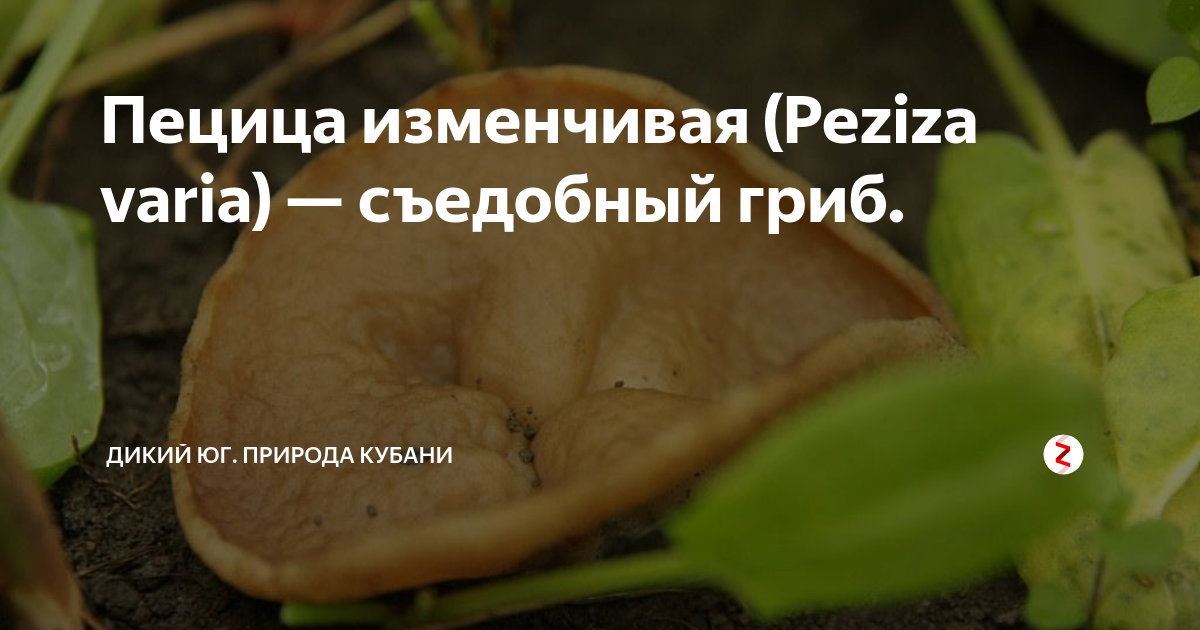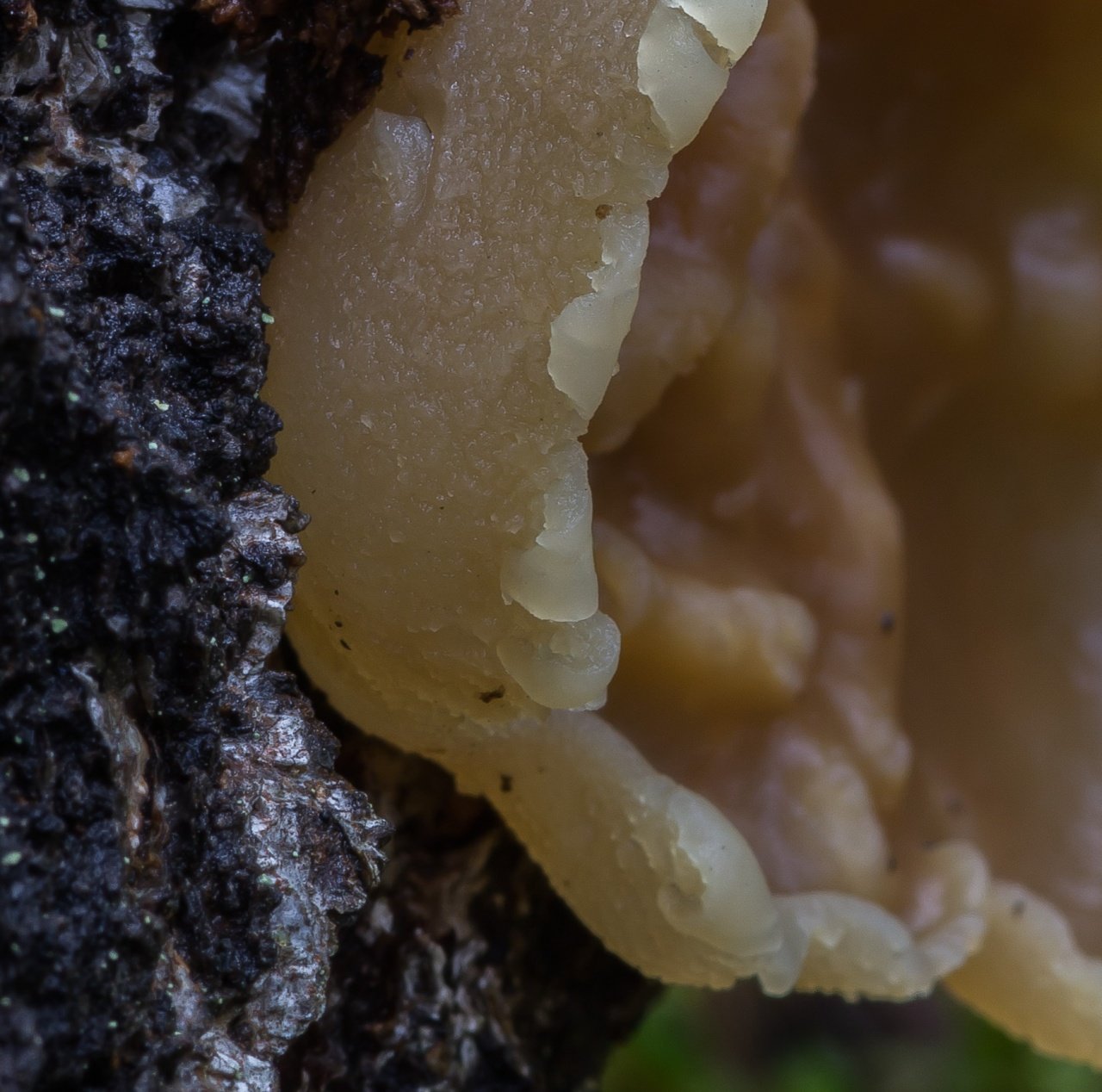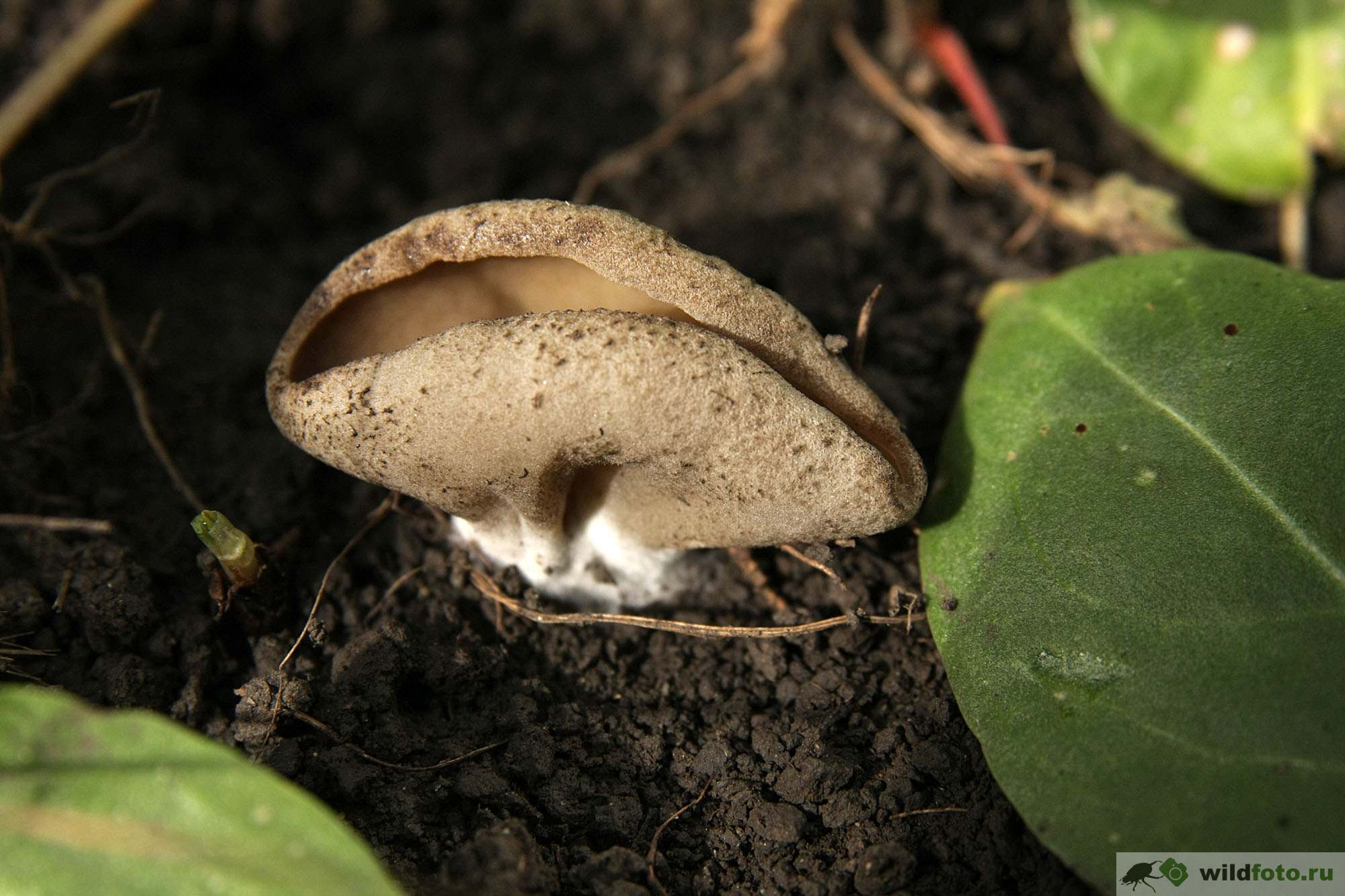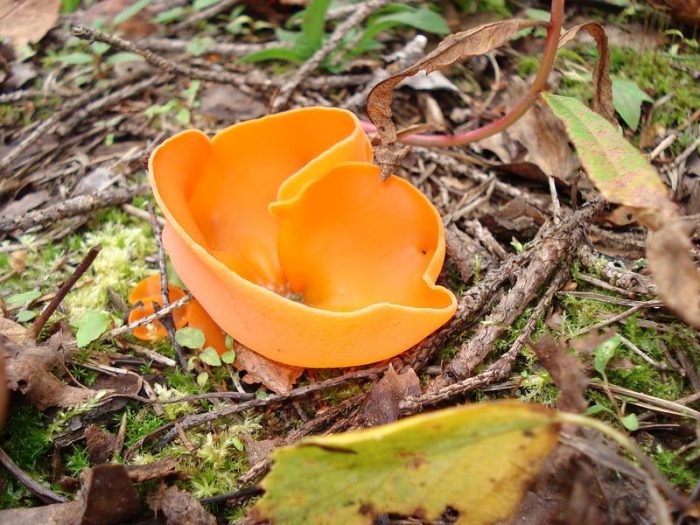Pecica varia (Peziza varia)
Fruit body: in young mushrooms, it has the shape of a hemisphere, bowl-shaped. Then the fruiting body loses its regularity, opens up and takes the shape of a saucer. The edges are often torn, uneven. The inner surface of the body is smooth, brownish in color. The outer side has a matte finish, grainy. Outside, the mushroom is lighter in color than its inner surface. The diameter of the fruiting body is from 2 to 6 centimeters. The color of the fungus can be very varied from brown to grayish-brown.
Stem: Often the stem is missing, but may be vestigial.
Flesh: brittle, very thin, whitish in color. The pulp does not stand out with a special taste and smell. When the pulp is enlarged in the cut with a magnifying glass, at least five of its layers can be distinguished.
Spores: oval, transparent spores, no lipid droplets. Spore powder: white.
Spreading
Pecica is found on soil and heavily rotted wood. Prefers soil abundantly saturated with wood waste and areas after fires. It grows quite often, but in small quantities. Fruiting time: from early summer, sometimes even from late spring to autumn. In more southern regions - from March.
Similarity
Some mycologists of old age claim that the Pecitsa fungus is a whole genus that includes mushrooms that were previously considered separate independent species. For example, these include Peziza micropus with a characteristic small foot, P. Repanda, and so on. Today the Petsica clan is becoming more united, there is a tendency towards unification. Molecular research has made it possible to combine the three species into one.
True, most of the rest of the Pecits, except for Peziza badia, which is larger and darker, does not grow on wood. And if a mushroom grows on wood, then it is almost impossible to distinguish it from a changeable pepper in the field.
Edibility
It is not known whether it is poisonous or edible. Probably, the whole point is in its low nutritional value. Obviously, no one even tried this mushroom - there is no motivation, due to its low culinary qualities.
Notes: The characteristic features of Petsica variace are torn edges and indefinable irregular shape. For this reason, Petsitsu is called changeable; you will not find two identical fruit bodies even with a strong desire.
Mushroom photo Pecitsa changeable from questions in recognition:
| Petsitz | ||||||||||
|---|---|---|---|---|---|---|---|---|---|---|
| Morel edible | ||||||||||
| Scientific classification | ||||||||||
|
||||||||||
| Latin name | ||||||||||
| Pezizales C. Bessey, 1907 Pezizales J. Schröt., 1894 | ||||||||||
| Families | ||||||||||
|
see text |
||||||||||
|
Pizza (lat.Pezizales) - the order of ascomycete mushrooms, the only order of the class Pezizomycetes (in Russian: Pecicomicetes or Pecicemice). Fruit bodies - apothecia (in species of the family Tuberaceae they become closed during maturation: "Secondary cleistothecia"), bags of the operculate type (when the ascospores are released, they are opened with a lid). As a rule, saprotrophs; some species are parasites of higher plants. The order includes a number of valuable mushrooms, including morels and truffles.
The class Pezizomycetes is part of the subdivision Pezizomycotina, being either a basal clade or the second (after Orbiliomycetes) clade in branch time, which is dated to the Ordovician or Silurian, respectively.
Pecica mushroom species
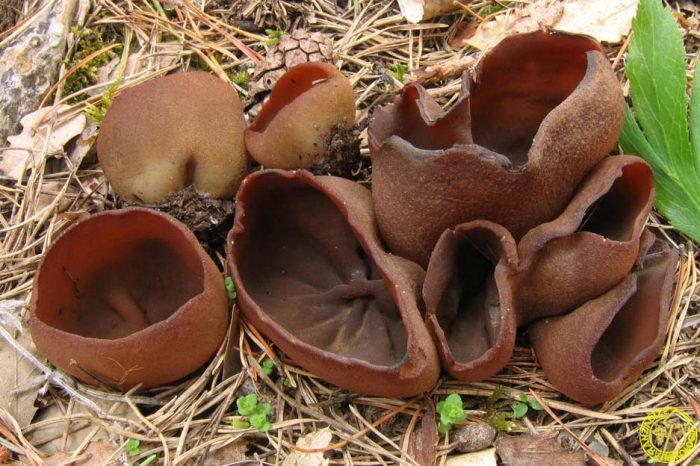
The fruit body is 2-10 cm in diameter, in a young mushroom it is cupped, later it opens to almost saucer-shaped, the edge is wavy, sometimes it breaks. From the inside, the surface is olive brown, smooth. From above it is red-brown in color, finely scaly. The false leg is not pronounced. The pulp is strong, grayish or brownish in color, multi-layered, taste and smell are not expressed.
It is found in Europe and North America, grows in groups, often on the ground or sawdust, in coniferous forests. The fruiting season begins in late summer and lasts until mid-autumn.
Due to its thin pulp and lack of pronounced taste, the mushroom does not have a high nutritional value.
Pecica varia (Peziza varia)
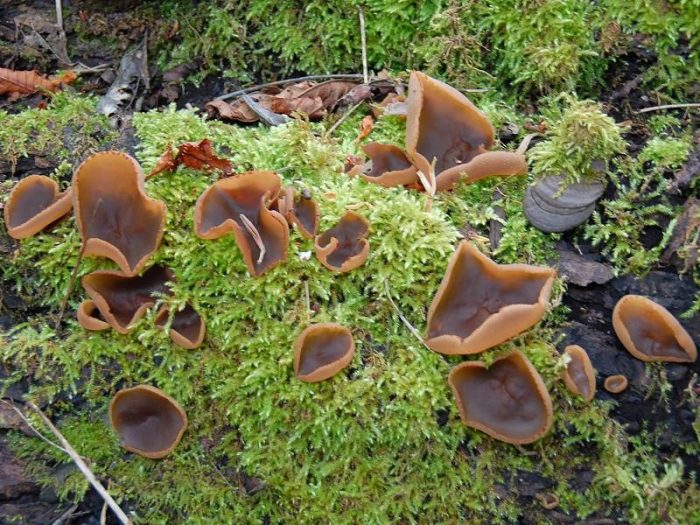
A large mushroom with a fruit body diameter of 2-15 cm in diameter, the shape of a young mushroom is cup-shaped, in mature mushrooms it opens to a saucer-shaped, wavy edge, bursting. The inner surface is gray-brownish or golden brown, darkens as the mushroom matures, the edge is pale. Above, the mushroom is pale, whitish or grayish-brownish, the surface is finely hairy. The false pedicle is poorly expressed. The pulp is strong, grayish or brownish in color, multi-layered, taste and smell are absent.
The fungus is common in Europe and North America, grows often, singly or in small tight groups, on the ground, sawdust, rotting wood in forests, gardens and parks.
The flesh of the mushroom is thin, and the taste is not pronounced, so it has no nutritional value.
Bubble Pecica (Peziza vesiculosa)
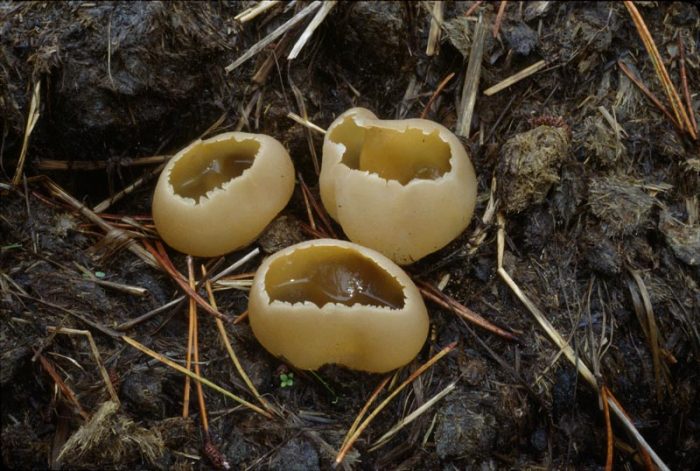
The fruiting body is 2-7 cm in diameter, 1-5 cm high, irregular, in young mushrooms, spherical in shape with a small hole in the upper part, later it grows and opens up to a cup-shaped one. The inner surface is pale brownish or yellow-brown in color, smooth, with characteristic "bubbles" in the center. The outer side is pale ocher in color, waxy, covered with "flakes". There is a false leg, small in size. The flesh is brownish, thick, strong, waxy, when it gets very wet it starts to show through.
It grows in Europe and North America. Grows in small groups on manure and well-fertilized soil, the season continues in summer and autumn.
Edible mushroom with low nutritional value due to its small size and thin flesh.
Purple Pecica (Peziza violacea)

The diameter of the fruiting body of the fungus is 0.5-3 cm, the shape is cupped, shallow. The inner surface is lilac, purple or reddish-purple, smooth. The outer surface is pale, grayish-lilac or pale brown in color. False leg is not always expressed, small. The pulp is pale lilac in color, thin, fragile, taste and smell are not expressed.
The fungus is found in Europe and North America and is a rare species. It grows in small groups on fires and fireplaces, the fertile season begins in spring and ends in early summer.
Edible mushroom.
Genus: Peziza
Peziza is a genus of mushrooms of the Pezizaceae family.
Etymology
Peziza, Pecitsa. From πέζα (peza) f, 1) leg; 2) edge, end.
Typical view
Peziza vesiculosa Bull., Herb. Fr. 10: tab. 457, fig. 1 (1790)
Description
Apothecia are solitary, less often in groups, sessile, at first almost spherical, later open to cupped, saucer-shaped, sometimes almost prostrate, with a brown, light brown, brown, reddish or yellowish hymenial layer, from 1-3 to 5 cm (less often 10) in diameter, brown on the outside, glabrous, sometimes as if sprinkled with flour or granular, fleshy or slightly brittle.
The bags are cylindrical, rounded at the top, eight-spore, stained blue from iodine.
Spores are ellipsoidal, colorless, unicellular, smooth, less often warty, prickly, with or without one or two drops of oil.
Paraphysis filamentous, expanded at the apex, filled with colored contents.
They grow on soil, wood (hemp, fallen branches), on plaster, manure and animal excrement.
Historical reference
The genus Peziza was first described in 1719 by Y. Dillenius (cited from Kimbrough, 1970), and all mushrooms with fruit bodies in the form of a disc are assigned to it. Since that time, many species of the genus Peziza have been described. E. Fries (Fries, 1822) united 323 species of the genus Peziza into the Peziza department with 4 sections: Aleuria, Phialea, Lachnea, Helotium. Later, these sections were separated into separate genera. K. Fukel (Fuckel, 1870) described a new genus Plicaria Fuck, with spherical spores; some researchers attributed species of the genus Peziza to this genus (Rehm, 1896; Naumov, 1964).
In the world summary of P. Saccardo's mushrooms (Saccardo, 1889, 1892, 1895, 1902, 1906), the genus Peziza includes more than 150 species; in addition, the genera Acetabula, Discina, Galactinia are given, G. Rem (Rehm, 1896) instead of the genus Peziza gives Plicaria with 31 species. The species of the genus Peziza, of which there are more than 800 in the monograph, are represented by synonyms of various discomycetes.
In the "Identifier of mushrooms" A. A.Yachevsky (1913), the genus Peziza has about 435 species, but among such a wide variety, there is a difference in the consistency of the fruit bodies and their shape, and in some representatives the hymenial layers are colored blue from iodine in others - not. In this regard, A.A. Yachevsky genus Peziza divides into 10 subgenera: Humana, Galactinia, Plicaria, Macropodia, Geopyxis, Melachroia, Acetabula, Aleuria, Discina and Pyronema. Already at that time these subgenera were considered by some mycologists to be independent genera. Joseph Velenovsky (1934) also recognizes the genus Plicaria and, examining the discomycetes of Bohemia, gives 31 species of this genus; the species of the genus Peziza are indicated by synonyms. In the "Identifier of Lower Plants" (1954) NA Naumov indicates 8 species of the genus Plicaria, and in the "Flora of Mushrooms of the Leningrad Region" (Naumov, 1964) 9 species of this genus are given. F. Seaver (Seaver 1942) recognizes the genus Peziza and lists 20 species for North America.
Related materials:
Smitskaya M.F. - Operculative discomycetes (Flora of fungi of Ukraine) (1980)
Synonyms
In 2002, based on the results of morphological and molecular studies, mycologists Hansen, Lesso and Pfister concluded that the boundaries between species Peziza varia, P. cerea, P. repanda and P. micropus very vague and undetectable, which prompted them to combine these four species into one polymorphic one under the earliest name - Peziza varia... Despite this, the other three names are still often used in the literature.
- Aleuria cerea (Sowerby) Gillet, 1881
- Aleuria micropus (Pers.) Gillet, 1881
- Aleuria repanda (Pers.) Gillet, 1881
- Aleuria varia (Hedw.) Boud., 1905
- Discina repanda (Pers.) Sacc., 1889
- Galactinia cerea (Sowerby) Le Gal, 1962
- Galactinia micropus (Pers.) Svrček, 1962
- Galactinia repanda (Pers.) Le Gal, 1962
- Galactinia varia (Hedw.) Le Gal, 1962
- Galactinia vesiculosa f. cerea (Sowerby) Svrček, 1961
- Geopyxis micropus (Pers.) Rehm, 1894
- Geopyxis varia (Hedw.) Rehm, 1894
- Humaria varia (Hedw.) Sacc., 1889
- Macroscyphus cereus (Sowerby) Gray, 1821
- Octospora varia Hedw., 1789basionym
- Otidea micropus (Pers.) Sacc., 1889
- Peziza cerea Sowerby, 1797
- Peziza micropus Pers., 1800
- Peziza repanda Pers., 1808
- Plicaria micropus (Pers.) Bánhegyi, 1939
- Plicaria repanda (Pers.) Rehm, 1894
- Pustularia cerea (Sowerby) Rehm, 1881
The edibility of the petsica mushroom
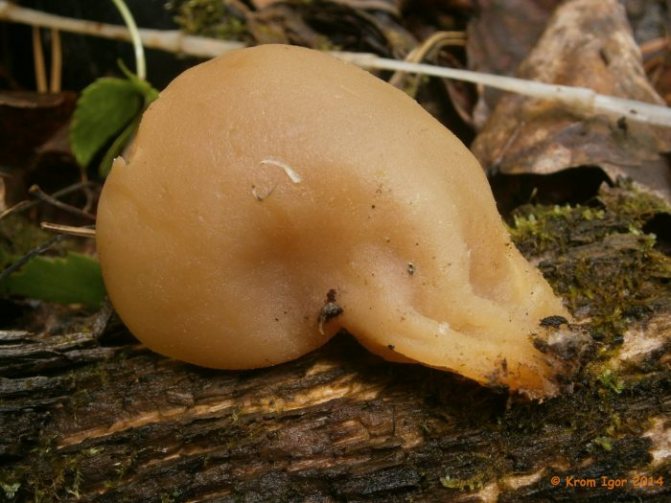
Pecitsa is an edible mushroom that differs from many edible mushrooms in that its taste and smell are practically not expressed. For eating, petsitsa are boiled and fried, added to salads and stews. During heat treatment, the color of the mushroom is lost. Petsitsa is also salted, pickled, added to various assorted mushrooms, salted and pickled petsitsa retains its color. In addition, pecitsa is used as a decorative element in salads and other dishes. Dried pepper is used to prepare a powder that is added to sauces and seasonings to give them their characteristic orange color.
Pecica mushroom has a high content of vitamin C, which increases the body's resistance to infections; this mushroom is recommended to be eaten during epidemics of viral diseases. Pecitsa perfectly helps the body to strengthen the immune system and recover from the winter, the season of colds and flu.
Pecitsa is also used for various inflammations, as a cleansing agent for cancer patients after a course of chemotherapy, and residents of large cities with a polluted environment.
In addition, the mushroom is used for various eye diseases, developing age-related hyperopia, it strengthens weak eye muscles and accelerates metabolic processes.
Foreword
Mushroom picking is one of the most useful and exciting activities for people of all ages and professions. There are more and more mushroom pickers every year. Since ancient times, mushrooms in Russia have been an aid in nutrition, a favorite dish of both the rich and the poor. With great skill, the mushrooms were dried, pickled and prepared from them soups, borscht, baked pies. This skill has been passed down from generation to generation. Each region of Russia had its own ways of harvesting and processing, its own secrets of culinary skills. Mushrooms as a food product have not lost their importance in our time. The purpose of this book is to continue your acquaintance with the world of mushrooms.
The book contains the Latin names of mushrooms
This is very important, since in books about mushrooms in Russian names there is such a discrepancy that only by the Latin name it is sometimes possible to determine which of them we are talking about
Often people return from the forest with empty baskets, because they only know well-known mushrooms, and strangers mistake them for inedible. Many mushroom lovers are trying to expand their knowledge of mushrooms, to increase the number of collected species.The book presents the so-called little-known edible mushrooms, the identification of which will help expand the use of wild mushrooms and assess their quality. However, not only them will be discussed in the monograph.
Among fans of mushroom hunting, all varieties of porcini mushrooms (birch, oak, spruce, pine, etc.) enjoy great authority. They are counted by the piece, unlike other mushrooms collected in baskets. By the color of the fruit body and forest "registration" there are about 20 forms of porcini mushroom. All of them are eminent, belong to the first category of quality and are not little-known edible mushrooms, but are given in the book in the same group with little-known ones. The author did so deliberately. Why? Firstly, porcini mushrooms were on the verge of being rare. Secondly, mushroom pickers do not always distinguish ceps by specific names. All twenty-odd forms of porcini mushroom, including those described in the book, are usually called by mushroom gatherers briefly: "porcini mushroom"
The author draws the attention of readers to the species diversity and encourages to recognize porcini mushrooms "by sight"
The well-known, widespread, harvested, tasty white mushroom (dry milk mushroom) does not belong to the little-known edible mushrooms. However, the author includes it in the text and explains to mushroom pickers, especially to beginners, that the white load (dry milk mushroom) is not a relative of the mushroom mushrooms, since it does not emit milky juice, which is typical for milkmen. In mycological science, the mushroom is unambiguously assigned to the genus "russula". It would be correct and fair to call this mushroom a russula white, and not a dry weight.
When writing the book, the author relied on his own observations accumulated when picking mushrooms from early spring to winter frosts every year, starting in 1960. The color photographs placed here from the author's personal collection were taken during mushroom hikes in Karelia, Murmansk, Leningrad, Kaliningrad, Ulyanovsk, Moscow, Samara regions, in Western Siberia (in Kemerovo, Novosibirsk, Tomsk, Tyumen regions), in the Urals, as well as in Crimean peninsula and southern Ukraine
Mushrooms grow everywhere: in the taiga and in the steppes, in mountain forests, in gardens, in meadows, swamps, in the tundra, etc. , the desire to preserve the world around us, to see through the world of mushrooms the richness of forest colors, to live in harmony with nature,


